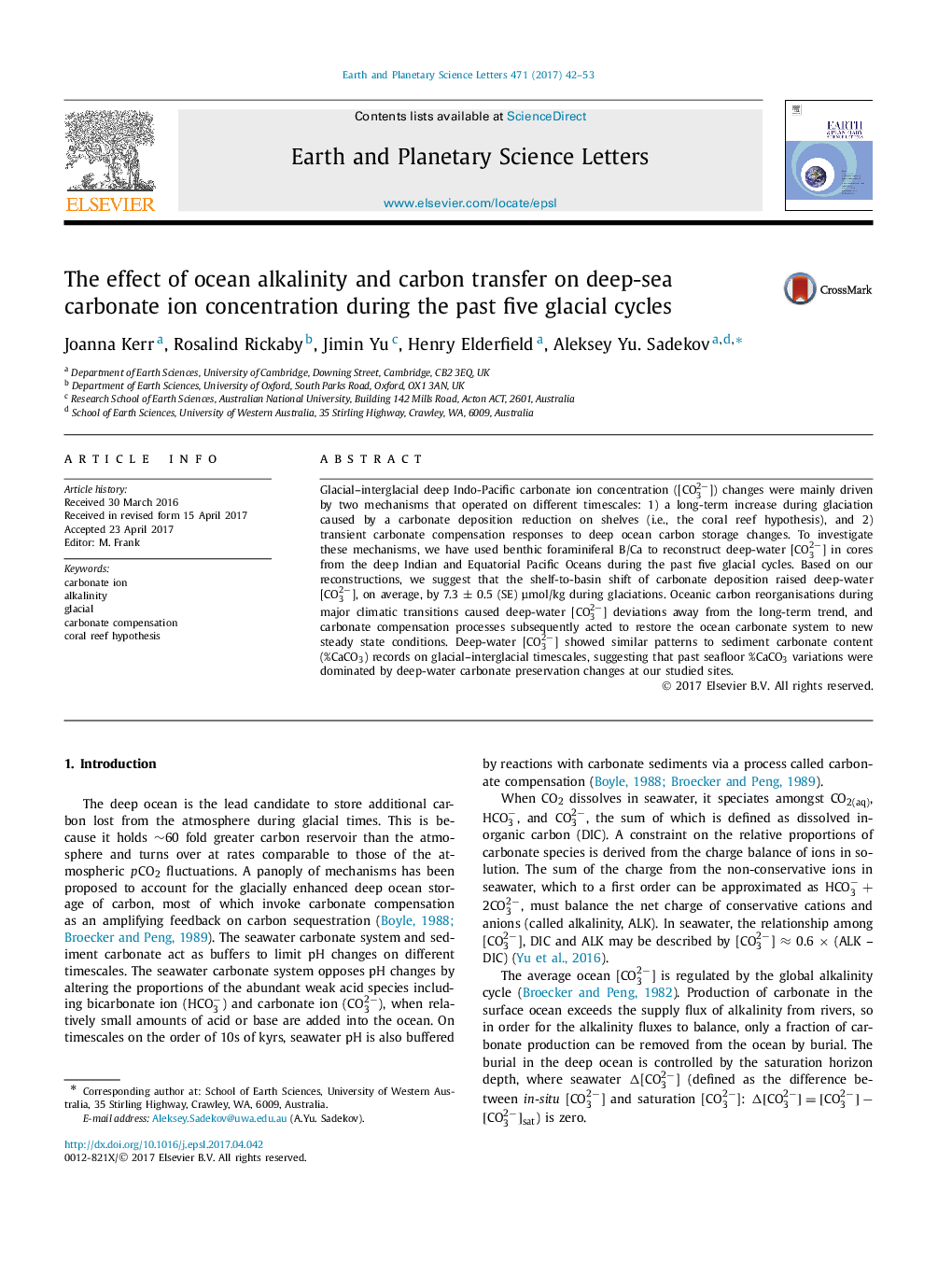| Article ID | Journal | Published Year | Pages | File Type |
|---|---|---|---|---|
| 5779773 | Earth and Planetary Science Letters | 2017 | 12 Pages |
Abstract
Glacial-interglacial deep Indo-Pacific carbonate ion concentration ([CO32â]) changes were mainly driven by two mechanisms that operated on different timescales: 1) a long-term increase during glaciation caused by a carbonate deposition reduction on shelves (i.e., the coral reef hypothesis), and 2) transient carbonate compensation responses to deep ocean carbon storage changes. To investigate these mechanisms, we have used benthic foraminiferal B/Ca to reconstruct deep-water [CO32â] in cores from the deep Indian and Equatorial Pacific Oceans during the past five glacial cycles. Based on our reconstructions, we suggest that the shelf-to-basin shift of carbonate deposition raised deep-water [CO32â], on average, by 7.3 ± 0.5 (SE) μmol/kg during glaciations. Oceanic carbon reorganisations during major climatic transitions caused deep-water [CO32â] deviations away from the long-term trend, and carbonate compensation processes subsequently acted to restore the ocean carbonate system to new steady state conditions. Deep-water [CO32â] showed similar patterns to sediment carbonate content (%CaCO3) records on glacial-interglacial timescales, suggesting that past seafloor %CaCO3 variations were dominated by deep-water carbonate preservation changes at our studied sites.
Related Topics
Physical Sciences and Engineering
Earth and Planetary Sciences
Earth and Planetary Sciences (General)
Authors
Joanna Kerr, Rosalind Rickaby, Jimin Yu, Henry Elderfield, Aleksey Yu. Sadekov,
